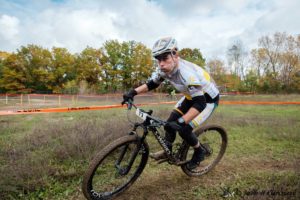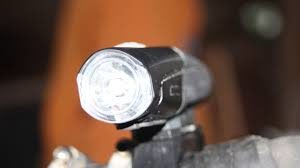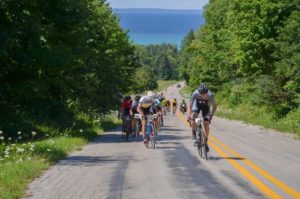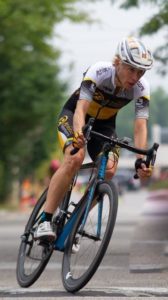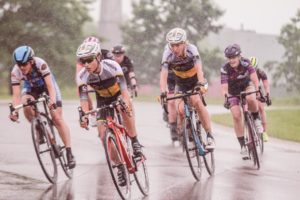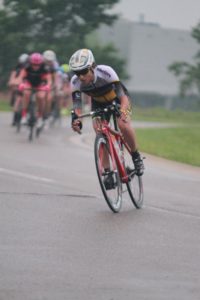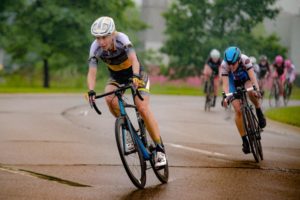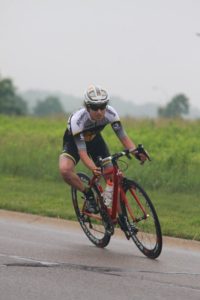What’s the deal with “Cross”?
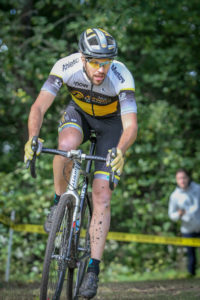
If you haven’t experienced cyclocross firsthand, you may be wondering why anyone would want to participate in such an event. If you aren’t familiar with cyclocross, imagine riding your bike as fast as you can, but throwing in every type of element that would make it more difficult to do so – grass, sand, mud, stairs, even barriers (think short hurdles). OK, this may sound a little crazy, but it’s also one of the fastest growing crazes in cycling.
So what is cyclocross (a.k.a. CX)?
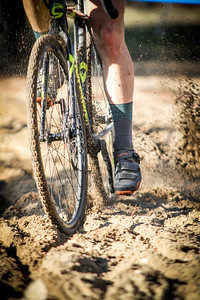 Cyclocross was created Belgium as a fun way to keep cyclists riding in the winter months. Today’s cyclocross events are timed events, typically between 30-60 minutes that take place on relatively short (1-2 mile) circuits, most often in parks. The circuits typically contain a mix of grass, gravel, mud, sand, and pavement with some features that require riders to dismount and run with their bikes for a short period of time. Those who are serious CXers are riding cyclocross specific bikes, spending time dialing in their tire pressure for the conditions and look smooth and efficient getting on and off their bikes. For most of us, however, CX offers one of the easiest and most laid-back environments to try a bike race. In most CX races, competitors can (and do) use either a cyclocross specific bike or a mountain bike. Races are categorized (USAC Cat 1-5 or Beginner/Sport/Expert). Beginner races last only 30-minutes and tend to be much more laid back than their road race cousins. Because of their history as a fun way to spend the winter, cyclocross races often include competitors wearing costumes and a fair share of heckling on the course.
Cyclocross was created Belgium as a fun way to keep cyclists riding in the winter months. Today’s cyclocross events are timed events, typically between 30-60 minutes that take place on relatively short (1-2 mile) circuits, most often in parks. The circuits typically contain a mix of grass, gravel, mud, sand, and pavement with some features that require riders to dismount and run with their bikes for a short period of time. Those who are serious CXers are riding cyclocross specific bikes, spending time dialing in their tire pressure for the conditions and look smooth and efficient getting on and off their bikes. For most of us, however, CX offers one of the easiest and most laid-back environments to try a bike race. In most CX races, competitors can (and do) use either a cyclocross specific bike or a mountain bike. Races are categorized (USAC Cat 1-5 or Beginner/Sport/Expert). Beginner races last only 30-minutes and tend to be much more laid back than their road race cousins. Because of their history as a fun way to spend the winter, cyclocross races often include competitors wearing costumes and a fair share of heckling on the course.
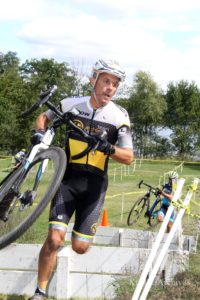 In other bike racing events, riders have to fight hard to “stay with the group” to take advantage of the drafting advantages. In Cyclocross, racers are riding against the course almost as much as they are against their competitors. Most races are spread out within the first lap with riders going their own pace as they take on the challenge of riding the features on the course. Also, because of the nature of the courses, CX races involved multiple laps and are well-suited to spectators as racers can be viewed multiple times throughout the race (and since they are often in parks, often have playgrounds for really young spectators to enjoy).
In other bike racing events, riders have to fight hard to “stay with the group” to take advantage of the drafting advantages. In Cyclocross, racers are riding against the course almost as much as they are against their competitors. Most races are spread out within the first lap with riders going their own pace as they take on the challenge of riding the features on the course. Also, because of the nature of the courses, CX races involved multiple laps and are well-suited to spectators as racers can be viewed multiple times throughout the race (and since they are often in parks, often have playgrounds for really young spectators to enjoy).
If you’ve wondered what this cyclocross this is all about, find a local race and come check it out. They’re fun to watch, but even more fun to ride. Whether you want to heckle or pedal, it’s hard to beat cyclocross for some fun this fall. Here are some links to the local Cyclocross series in Michigan:
- MiCX Series (http://www.michigan-cycling.org/cyclocross/)
- Kisscross – West Michigan (http://kisscross.com/schedule/)
- RunUP Cross – (https://www.facebook.com/pg/RunUpCX/events/?ref=page_internal)
The post What is the deal with “Cross”? appeared first on Team Athletic Mentors.




 Our Hockey Site
Our Hockey Site Team AM
Team AM


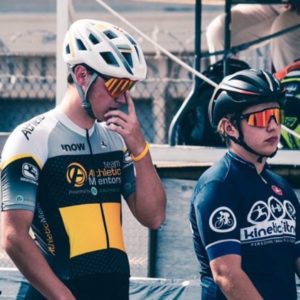
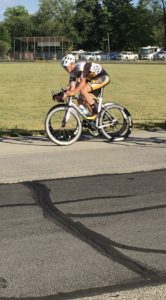
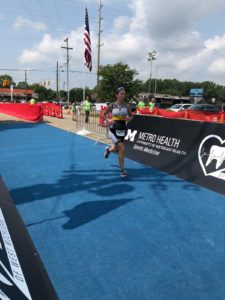
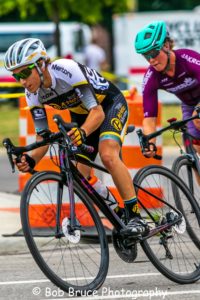 As I entered my first full year of competitive cycling, one thing was certain: I was due for a bicycle upgrade. This became very evident in April at the Tour of the Gila when there were no neutral wheels available to me as I was the only woman in the peloton with a 10-speed cassette! Since Liv, a sister company of Giant featuring women-specific bicycles, is a sponsor of our team, I knew I wanted to start there with my bicycle search. Fortunately, Liv offers a comprehensive line-up of race bicycles, so I knew I would find a bike that would meet my needs. After much research and vascillation, I chose the 2019 Langma Advanced Pro 1 Disc. With an advanced-grade composite frame, Shimano Ultegra mechanical groupset, and Giant SLR-1 Disc 30 WheelSystem, I knew I would be getting quite an upgrade from my previous race machine.
As I entered my first full year of competitive cycling, one thing was certain: I was due for a bicycle upgrade. This became very evident in April at the Tour of the Gila when there were no neutral wheels available to me as I was the only woman in the peloton with a 10-speed cassette! Since Liv, a sister company of Giant featuring women-specific bicycles, is a sponsor of our team, I knew I wanted to start there with my bicycle search. Fortunately, Liv offers a comprehensive line-up of race bicycles, so I knew I would find a bike that would meet my needs. After much research and vascillation, I chose the 2019 Langma Advanced Pro 1 Disc. With an advanced-grade composite frame, Shimano Ultegra mechanical groupset, and Giant SLR-1 Disc 30 WheelSystem, I knew I would be getting quite an upgrade from my previous race machine.